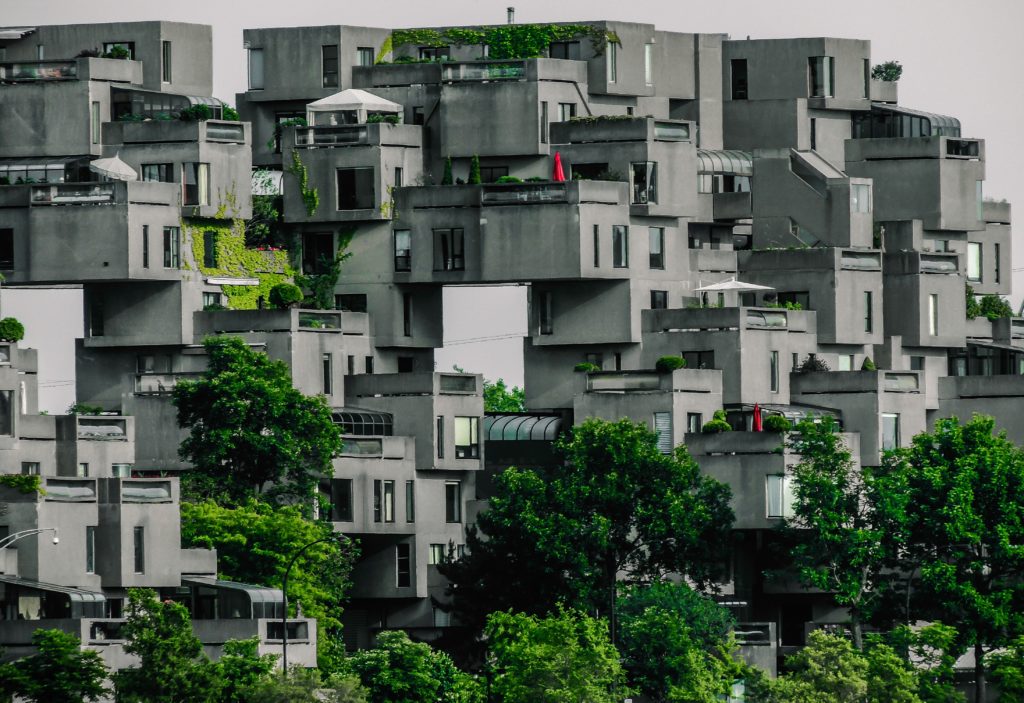
Would you live in this industrial-inspired apartment complex?
Montreal’s Habitat 67 is has become one of Canada’s—and North America’s—most recognizable landmarks thanks to its striking facade.
Habitat 67 was designed by Israeli-Canadian architect Moshe Safdie as part of his thesis at McGill University. He designed the complex to serve as an innovative housing option for people living in large, crowded cities like Montreal.
The architect’s vision was officially brought to life upon completion in—you guessed it—1967, when it served as a pavilion for the 1967 World’s Fair (AKA Expo 67, hence its name). Habitat 67 is comprised of 354, 600-square-foot concrete units that are geometrically stacked on top of one another (some reach a staggering 12 stories tall!), which are connected by steel cables.
The 354 units form 148 apartments of various shapes, sizes, and layouts. Each offers incredible panoramic city and water views thanks to suspended private terraces. The interiors are just as spectacular, with sleek elements like sun-drenched skylights and pillars. Every residence is also equipped with its own roof garden. Plus, the pedestrian-friendly streets, walkways, and footbridges woven throughout the complex make it easy to navigate and explore.
In 1986, the complex—originally owned by the Canadian government—was purchased by a Quebec-based businessman, who then sold it back to the building’s tenants. Today, the now-iconic monument, which is situated in Montreal’s famous Cité du Havre neighborhood (near the Old Port) has attracted countless visitors thanks to its modern-, minimalist-, and industrial-inspired aesthetic.
If you’ve truly fallen in love with the building, you’re in luck: Units are available. However, if you aren’t in the market for one and just want to see the complex, you can sign up for the 90-minute guided tour.

